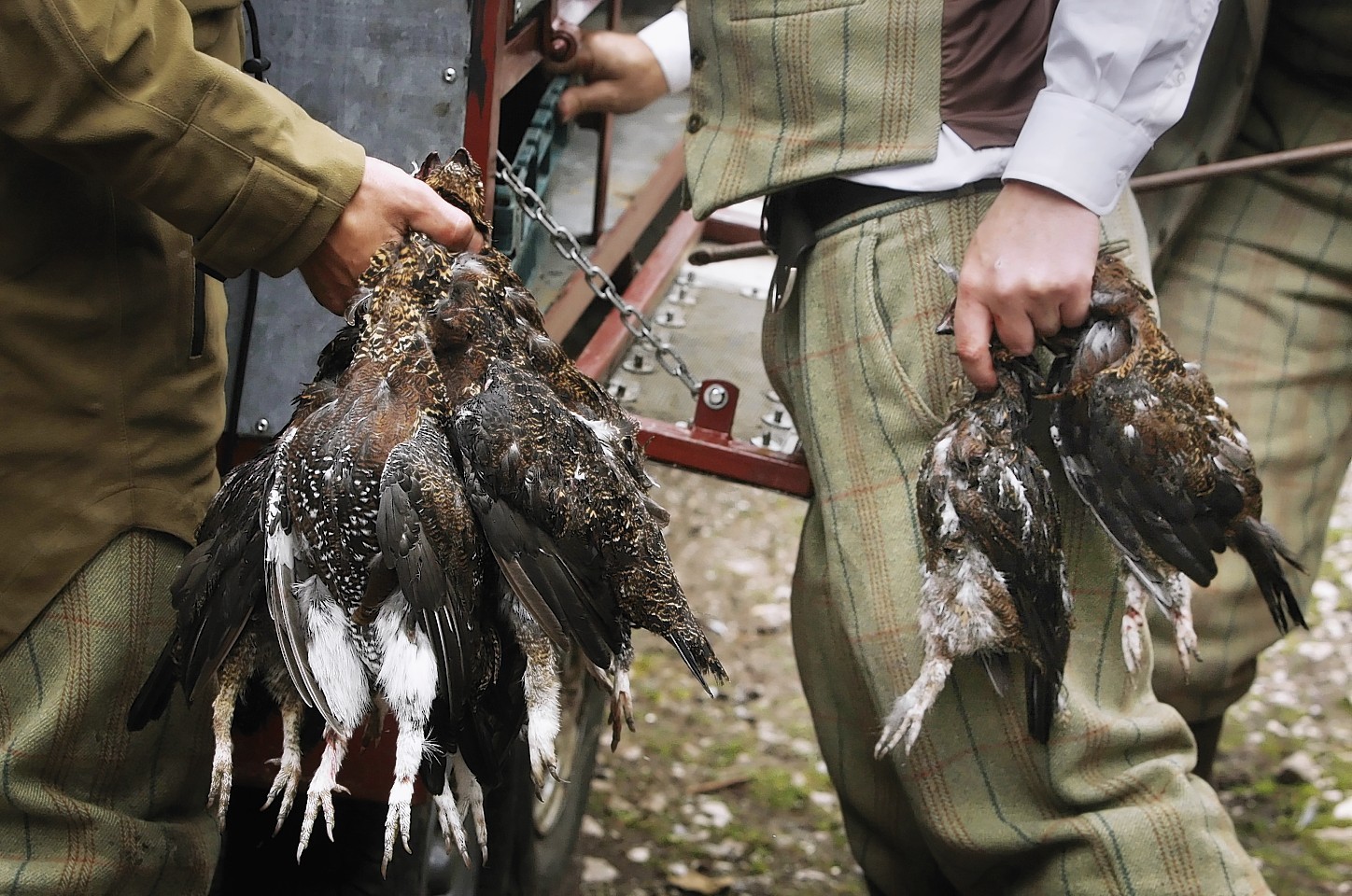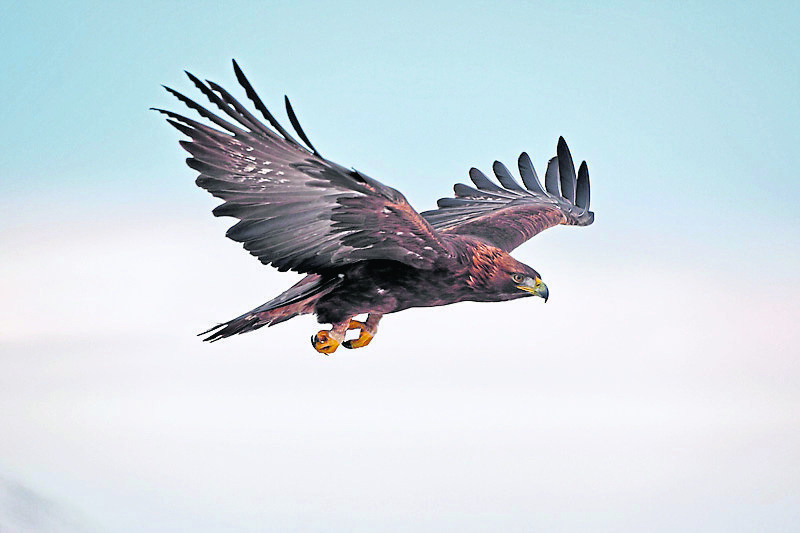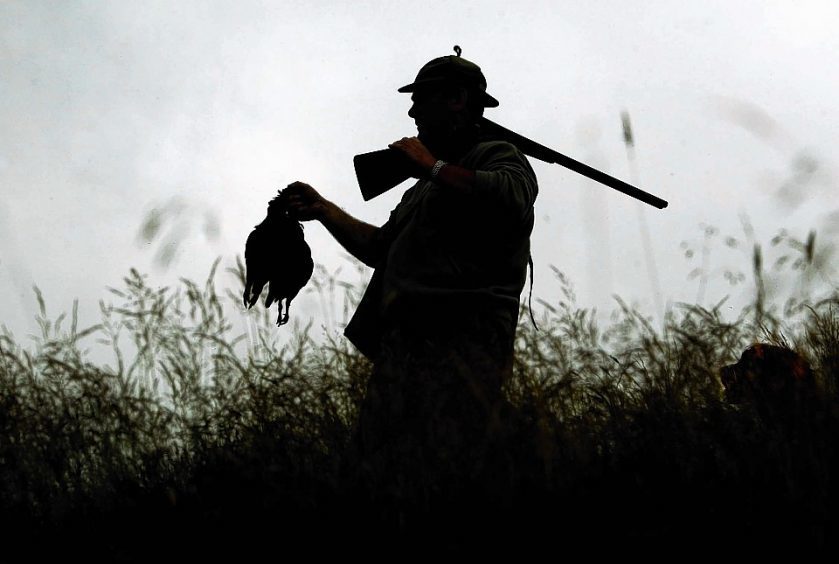A furious row has erupted over a bid to outlaw driven grouse shooting in order to protect wildlife on Scotland’s moorlands.
The plea has been made in a manifesto that will be distributed to politicians ahead of next year’s Scottish election by a coalition of animal welfare, environmental and social justice groups lobbying for grouse moor reform.
But the proposal has angered landowners and gamekeepers, who argue that ending grouse shooting will devastate rural economies as they try to cope with the damage caused by the coronavirus.
The manifesto has been drawn up by Revive, an umbrella group involving the League Against Cruel Sports; OneKind; the independence-supporting Common Weal think tank; Raptor Persecution UK and Friends of the Earth.
Revive estimates up to 18% of Scottish land is managed for grouse shooting with many sporting estates located in the north, north east and Tayside.
The driven grouse shooting season opens on the Glorious Twelfth (of August) and involves a line of beaters driving the birds towards waiting guns, which are fired from butts.
Revive, which has taken part in fringe meetings at SNP and Labour conferences, has previously argued that moors should be licensed to prevent the killing of animals, to preserve grouse numbers.
Call for an end to the ‘wider circle of destruction’
But its manifesto makes an explicit commitment to ending the driven grouse shoots, which are organised by many Scottish sporting estates.
The document argues for a “widescale change” from the “monoculture of intensive grouse moor management” to a more sustainable wooded landscape.
Such a change would stop environmental damage and protect biodiversity, the document claims.
Stopping shooting would end the “wider circle of destruction” around shooting, such as the persecution of birds of prey like golden eagles.
The document also calls for protection of mountain hares, a ban on cage traps and snares as well as licensing of spring traps.
It calls for muirburn, the practice of heather burning to regenerate moors, to be licenced, a ban on lead ammunition and the outlawing of medicated grit to protect grouse against parasites as well as regulation of hill tracks.
Revive campaign manager Max Wiszniewski said: “There’s a circle of destruction that surrounds Scotland’s grouse moors in which the land is burnt, mass outdoor medication is left out in the open, tons of lead shot are spread across the countryside, bulldozed hilltracks scar the land and tens of thousands of foxes, stoats, weasels, crows and mountain hares are snared, trapped and killed – all so grouse can be maintained at unnaturally high numbers, so a few people can shoot them for sport.”
But landowners and gamekeepers warned that ending driven grouse shooting would cost jobs in rural areas. A 2015 study found that the overall value of country sports tourism to Scotland is £155 million. It also supports thousands of jobs.
At a time when the rural economy is in turmoil due to the Covid-19 pandemic, many people will be bewildered at Revive continuing their zealous pursuit of grouse shooting and renewing their call for extreme measures which would cost more jobs and livelihoods.”
Sarah Jane Laing of Scottish Land & Estates
According to Revive, grouse moors bring in £23m, but argue that is less than 0.04% of Scotland’s economy per year.
Last week the Scottish Government confirmed that country sports would be eligible for grants worth £25,000 to support struggling businesses during the coronavirus crisis.
Sarah Jane Laing, chief executive of Scottish Land & Estates, said: “At a time when the rural economy is in turmoil due to the Covid-19 pandemic, many people will be bewildered at Revive continuing their zealous pursuit of grouse shooting and renewing their call for extreme measures which would cost more jobs and livelihoods.
“Many aspects of their document seek to mislead on grouse moor management. For example, the Muirburn Code – endorsed by government – already prohibits muirburn on deep peatland. Revive puts forward no scientific evidence on why muirburn should be banned for grouse shooting and, interestingly, does not call for a ban when it is used for agriculture and deer management.
“Similarly, Revive fails to mention that the recent passage of the Planning Bill through the Scottish Parliament saw amendments brought forward to require full planning permission for sporting businesses for hill tracks – a move that was rejected by parliament.
“As reported in the recent government-commissioned Werritty review, six gamekeeper jobs are typically maintained for the same area of land that would need one shepherd if used for farming. Grouse shooting is a huge part of the rural economy and the focus should be on supporting these jobs during this tough period.”
A Scottish Gamekeepers Association (SGA) spokesman said: “It comes as no surprise that an extreme lobby group set up solely with the purpose of ending driven grouse shooting should want to end driven grouse shooting.
“At a time when the UK economy is seeking to rebound from Covid-19, the driven grouse sector will play a pivotal role in recovery in fragile areas. Throwing that away, in favour of Revive’s fanciful, untested visions is something these communities can ill afford.
“Not only does driven grouse shooting sustain many hundreds of households in remote rural areas, it brings in significant tourism spend, tax and VAT for government on land classified as suitable only for rough grazing.
“The predator management provided free of charge by gamekeepers provides a refuge for red-listed species in global decline and helps ensure the farmers can get food on the nation’s tables, through livestock and crop protection.”
The SGA spokesman added: ““Revive’s repeated wish-lists will irresponsibly wreck the rural economy and tear up a significant part of our cultural heritage.”


